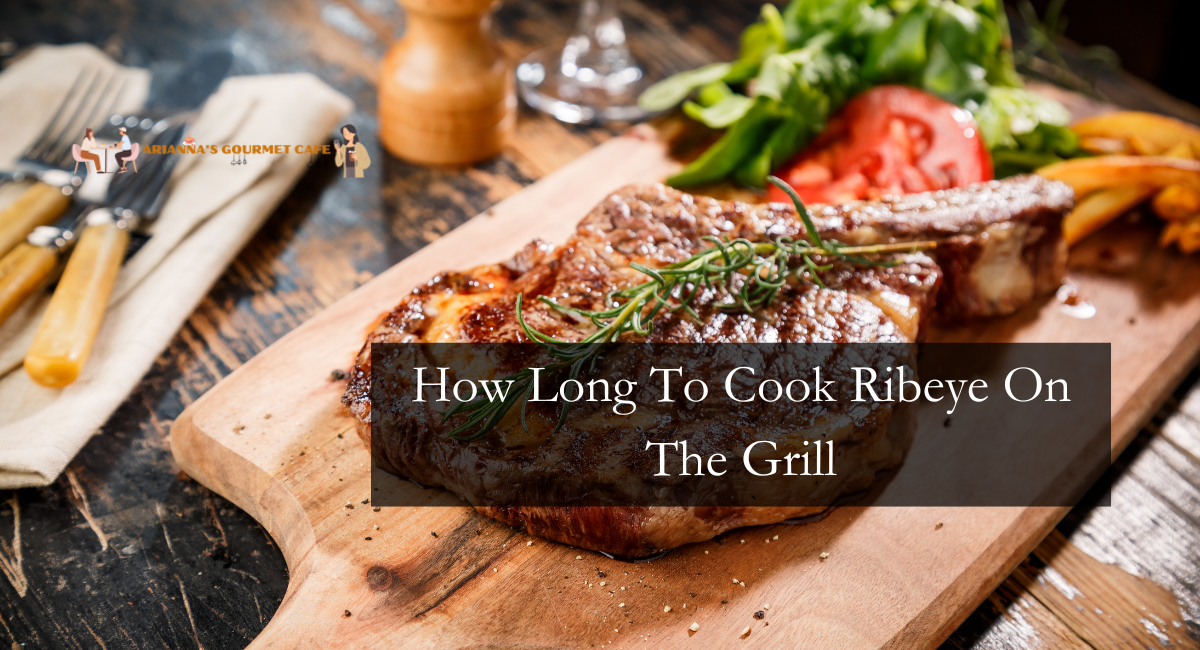Perfectly grilling a ribeye steak requires precision timing. The optimal grilling time for a ribeye depends on the intended degree of doneness and the steak’s thickness. Whether you prefer your rare, medium-rare, or well-done ribeye, we will provide cooking times and tips to obtain juicy and flavorful ribeye in this guide. Prepare to improve your grilling abilities and savor the delectable results. This article will explain how long to cook ribeye on the grill.
Ingredients
- One or more ribeye steaks
- Olive oil (or another culinary oil) is used for cooking.
- Season with pepper and salt (or your preferred seasoning).
Equipment
- Grill
- Tongs
- Meat thermometer
- Timer
How Long To Cook Ribeye On The Grill
- A 1-inch-thick ribeye steak takes 10 to 12 minutes on a 450-degree grill to reach an internal temperature of 140 to 145° F, which corresponds to a medium-rare, slightly pink, but firm steak.
- Uncommon—cold red core (125°-130°) six to eight minutes total grilling time. Please see the warning listed below.
- Medium-rare—warm red center (130°-135°), approximately 9 to 10 minutes on the grill.
- Medium-pink and firm (140°-150°) after approximately 10 to 14 the total grilling time.
- Medium-Well—barely rose (150°-155°) 13 to 16 minutes of total grilling time.
- Well done—firm and brown (160°+) after 15 minutes or more on the grill.
As with most cooking, there are numerous variables:
- The size and thickness of the steaks.
- The temperature of the flesh after it has rested at room temperature prior to cooking.
- The grill.
- To cook steaks properly, you need a meat thermometer with an instant-read display and a grill surface thermometer.
Warm Up The Grill
- Ensure that your grill is clean and functioning properly. Clean and mildly oil the grates to prevent sticking.
- Start the grill and set it to a high temperature. The grill should be as hot as feasible. Typically, preheating takes 10 to 15 minutes.
2. Cook The Ribeye
- Remove your ribeye steaks from the refrigerator 30 minutes before barbecuing. This enables the steak to reach room temperature, which promotes more uniform cooking.
- Pat the steak dry with paper towels while it rests. Surface moisture can prevent browning and searing.
3. Seasoning A Steak
- Lightly brush olive oil or another cooking oil on both sides of the steak. This not only helps keep things from sticking, but it also helps make a nice roast.
- Put a lot of salt and pepper on the steak. You can make a tasty crust with either kosher salt or sea salt. If you want more taste, you can add more seasonings or rubs.
4. Barbecue The Ribeye
- Place the seasoned ribeye steaks on the grates of a heated grill. The sirloin should produce a satisfying sizzle when grilled. Close the cover of the grill.
- Cooking periods can vary depending on factors such as the steak’s thickness and the grill’s heat intensity. Use the following guidelines for a ribeye sirloin with a thickness of 1 inch:
- Grill for about 2 to 3 minutes per side for rare.
- Medium-rare requires 3 to 4 minutes per side on the grill.
- Medium: Grill each side for approximately 4-5 minutes.
- To achieve a medium-well doneness, grill the meat for approximately 5 to 6 minutes per side.
- Well done: Grill for about 6-7 minutes per side.
- Use a timer or stopwatch to monitor the duration of cooking. Remember that only flipping the steak once is essential to achieve a nice sear.
5. Verify Temperature
- Use a meat gauge to make sure that your ribeye is done the way you want it. Put it in the middle part of the steak without touching the bone:
- Uncommon: 125°F (52°C)
- Medium-rare: 135 degrees Fahrenheit (57 degrees Celsius).
- Medium: 145 degrees F (63 degrees C)
- Medium-well: 155 degrees Fahrenheit (68 degrees Celsius)
- – the,
- The steak can rapidly change from medium-rare to medium-well, so don’t overcook it.
6. Resting The Steak
- Once the steak is the right temperature, take it off the grill with tongs and put it on a clean plate. It should be left alone for about 5 minutes.
- Resting is essential because it enables the meat’s juices to redistribute. This results in a sirloin that is more flavorful and tender when cut.
7. Cut And Serve
- After letting the ribeye settle, slice it against the grain. Against-the-grain slicing assures tenderness by shortening muscle fibers.
- Serve your exquisitely seared ribeye steak immediately with your preferred sides and condiments.
8. Caution Regarding Rare Sirloin
- Rarely is challenging to strike accurately.
- Reduce the grilling time for the first side from 6 to 4 minutes, and monitor the internal temperature with an instant-read thermometer.
- Remember that you can cook more later, but a steak cannot be undercooked.
Tips
- If a layer of fat can be trimmed along the edge, trim it. It does not add flavor and will create trouble when it melts and cause flare-ups.
- The precision of seasoning is indispensable. Do not salt the meat more than a few minutes before cooking unless the preparation time is at least 60 minutes. Between these periods, it will extract water from the meat fibers without allowing sufficient time for reabsorption.
- Do not omit the room-temperature rest before cooking, or the cooking time will significantly increase, and the exterior will be overcooked before reaching the desired temperature.
- Flip the meat 90 degrees midway through cooking on each side to obtain the crisscross grill marks.
- Pay attention to the post-cooking rest. It permits the meat fibers to reabsorb moisture, resulting in a more tender and juicy sirloin.
- Please do not use sirloin sauce or marinade.
Thanks for reading.










